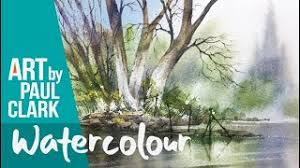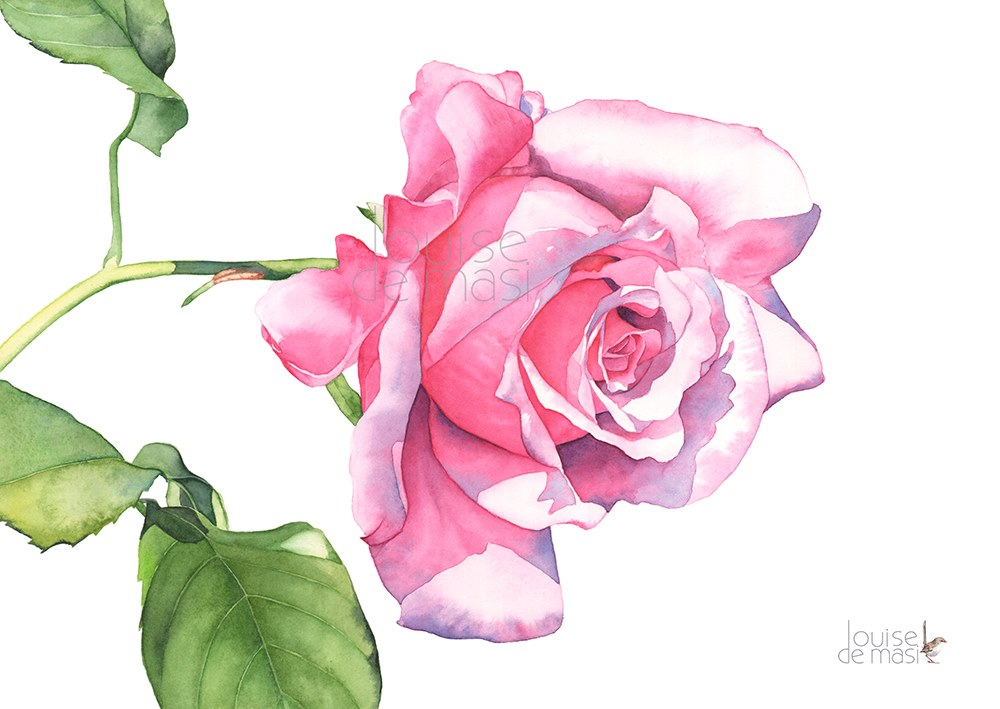Eric Yi Lin- Cafe Watercolor
Eric was born in Taiwan, and moved to the United States when he was 14. He lives in the Seattle area with his wife and three sons. He attended art school, and worked in art fields before deciding to dedicating his time to Watercolor and his own art.
He has an online art school program that takes you from basic drawing skills to painting skills. He has a very loose style, which he demonstrates on YouTube . I love his gentle, conversational style. His focus is more on composition and making a successful painting. YouTube's do not include drawings...you watch him do the drawing...or references. If you subscribe to his Patreon page, you can get the references and final picture that you can download. The cheapest Patreon is $5. His higher ones include more personal attention, such as help with your painting.

Here is one of his beautiful portraits of his wife. He can do landscapes, animals, flowers, anything. His main focus seems to be landscapes.
Eric's mentor is Andy Evanson, (pronounced with a long e) a well-respected workshop artist. You will find that he emphasizes the importance of three basic things: value studies, connecting shapes, and simplifying into large shapes.
In order to give you a feel for his teaching process, I've chosen this photograph I took coming home from work one day, a barn about 5 miles from my house.
I put it on my Notanizer app to bring it down to 2 values, white and dark. I evaluated what I wanted to keep, what I wanted to treat as light or dark. Then I made a sketch, leaving out details. I also decided to take out the wire and the pole on the right.
Next step is to make a puddle of gray paint. (You can use Paynes gray, neutral tint, or any dark brown or blue. The color just needs to be able to be a dark value as well as a medium value when you add water.)
I looked at my notanizer and painted everything that is not light or white a medium value. I tried to connect as many shapes as possible. I'm looking to see if my big shapes look interesting and connected. (I am using a rough paper, but that's not necessary)
Next I decided on what my darkest shapes will be. I made a darker mixture of my medium gray for this. Now I can really see whether or not I like this composition. If you don't see an interesting composition at this point, you should consider changing something about the picture.
Now to transfer this process to color.
I picked three colors (just for simplification), a medium green, ultramarine, and burnt sienna. I wanted a medium value of all these colors. (We found that if you put a red plastic over the 3 puddles, they all looked the same value)
I'm going to start with the sky. Mixing a small amount of sienna to make the sky less blue, I wet the sky area (even the trees) and added the blue, lifting out the clouds. Then I started loosely adding some green to the trees, some gray into the barn areas (gray made from blue and sienna), and let them bleed together when they met. Then back to greens for the grasses and trees on the right. I didn't paint the sidewalk, stonework, or roofs.
I let all that dry, then did my darks. I made darker versions of the previous colors: a darker, bluer green; a darker brown/gray version for the barns, keeping the burnt sienna ready to drop in to give the barn more interest. I paid more attention than I did with the value study, doing some dry brushing with the dark green in the trees. When adding the darks to the wood, I used a small brush (or credit card) to drag some lines down to indicate boards in the wood.
When I had the darks in, I added some light sienna to the stonework and the sidewalk. It doesn't show where I added some shadow at the bottom left of the sidewalk to keep it from drawing the eye off the page. Also added some dark lines in some of the barn wood. And spattered some of the trees and bushes in the foreground.
I was pretty happy with my first try at this process.
Here Eric shows this process. Talking about simplifying by connections.
https://www.youtube.com/watch?v=9i3hIIKTgCI
value study lessons learned from Andy Evanson
https://www.youtube.com/watch?v=QBrMVl6ZbJQ&t=364s
As promised, Eric's YouTube on the 30/70 rule.

















.jpg)





